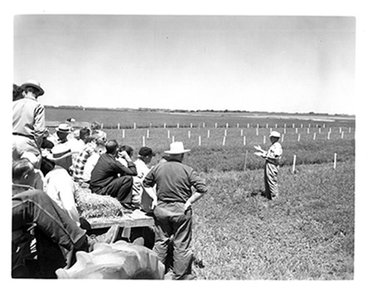Established in 1959, Southwest Research & Outreach Center was originally known as the Southwest Experiment Station (SWES). SWES was renamed Southwest Research and Outreach Center (SWROC) in 1999. Our center was established to address the strong need for research on crop production and adaptation in southwestern Minnesota.
The Minnesota Legislature appropriated funds for locating and purchasing a site in southwestern Minnesota for an experiment station in 1957. The station was designated to be of primary service to the 14 southwestern counties: Brown, Cottonwood,& Jackson, Lincoln, Lyon, Martin, Murray, Nobles, Pipestone, Redwood, Renville, Rock, Watonwan, and Yellow Medicine.
In 1959, a 240-acre farm just west of Lamberton, very near the geographical center of the designated 14-county area, was purchased. SWROC is one of the few experiment stations ever located where it is specifically because of soil type—the station’s Clarion-Nicollet-Webster soil type is characteristic of approximately 60 percent of the cropland in the area served.
Our primary responsibility, as outlined by the legislature, was to work on crops and areas relating to their production in southwestern Minnesota. Accordingly so, soils, agronomy, entomology, and plant pathology became the core focus of our research and education programs.
As the station expanded over the years, so did our mission and research activities. Our name changed to the Southwest Research and Outreach Center to better represent all our efforts. We still focus on crop production issues common to& southwestern Minnesota, but we have also embraced environmental and social issues and expanded our outreach programs.

